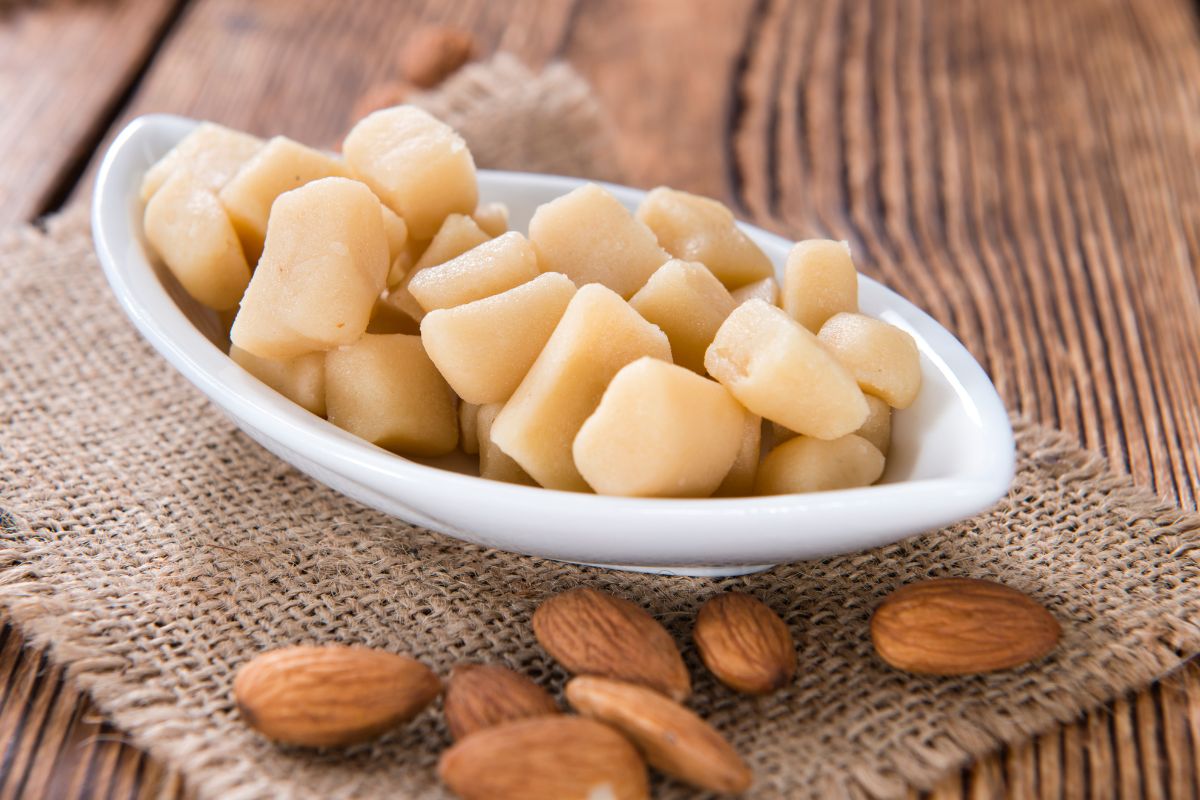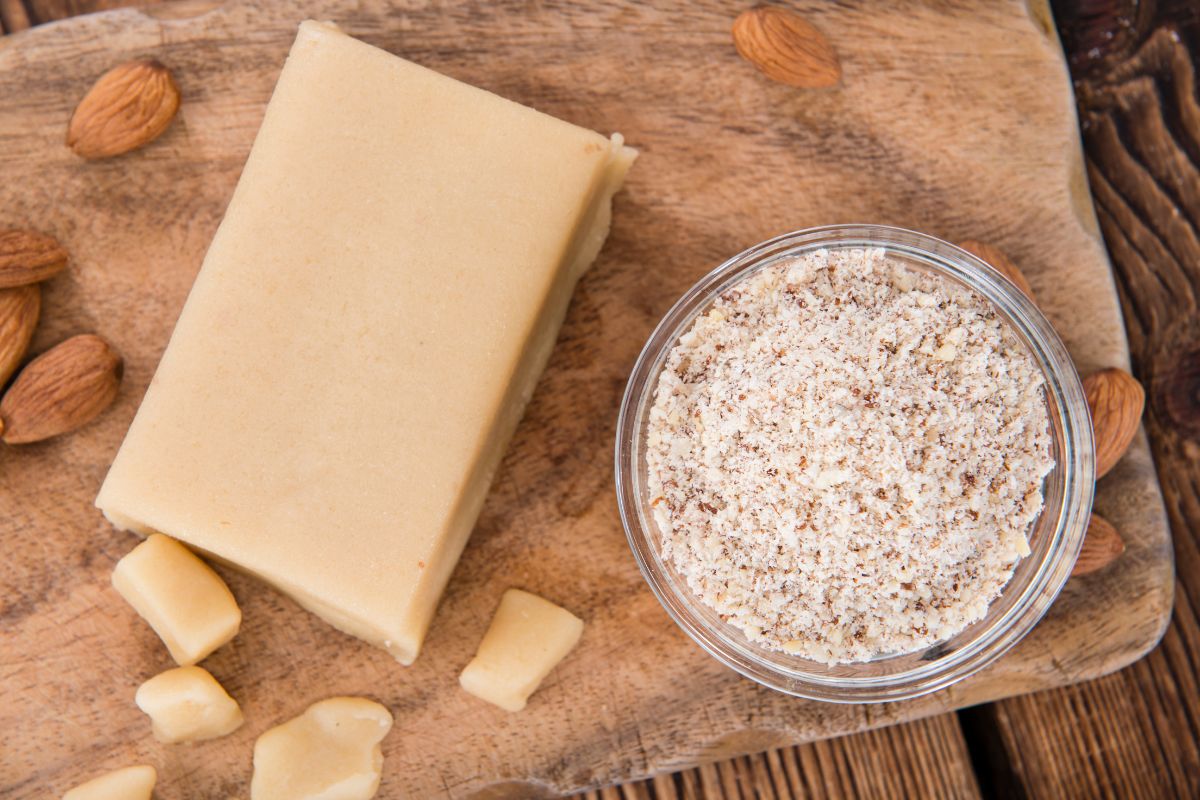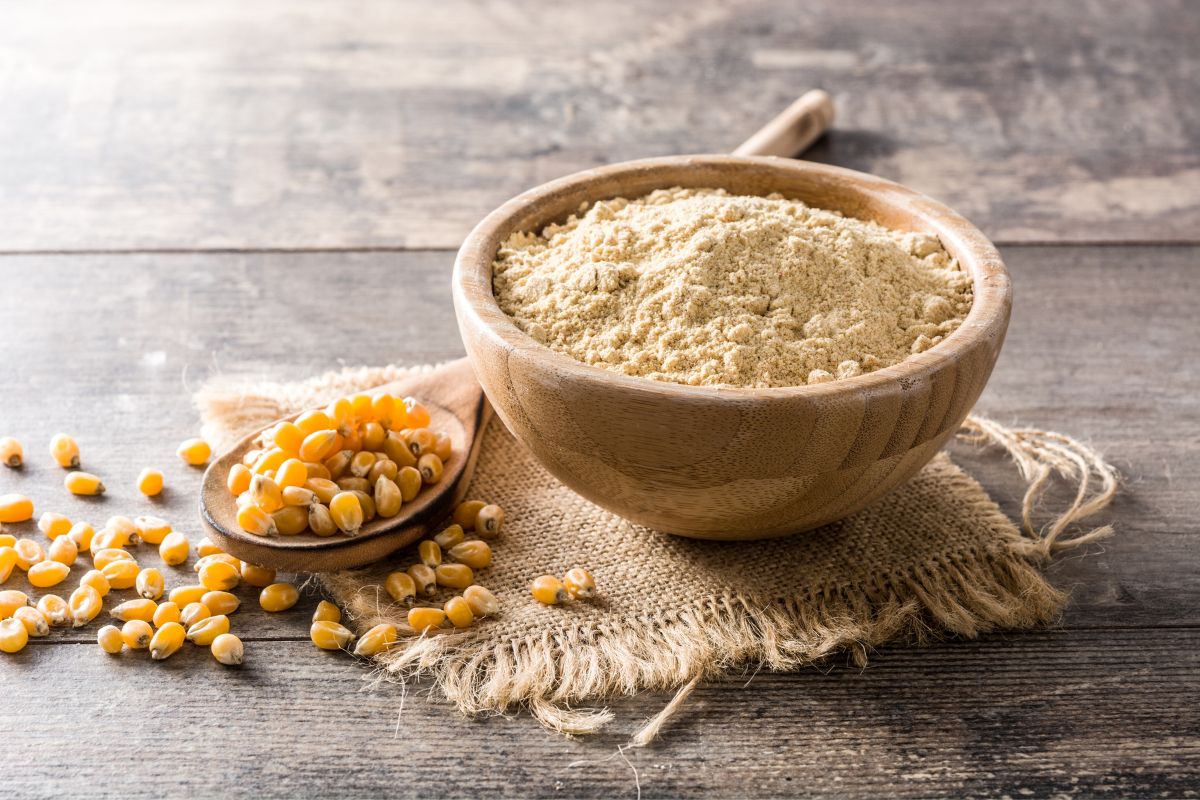Marzipan has been enjoyed by people around the world for centuries, with origins stretching back to the Middle Ages.

Today, marzipan is a popular ingredient in cakes, pastries, and desserts of all kinds. Read on to learn more about marzipan and the various ways it can be used in the kitchen.
What Exactly Is Marzipan?
Marzipan is an edible mixture of finely-ground almonds, sugar, corn syrup, and egg whites with roots in many parts of the world.
Its exact origin is still up for debate, but there are a few places it likely comes from, including Persia, Germany, Spain, Italy, and France.
Regardless of its origin, though, one thing that has become synonymous with marzipan is the winter holidays.
How Did It Become Popular?
The popularity of marzipan can be attributed to settlers coming over from Europe.
Many Americans have grown up with versions made from peanuts instead of almonds – but regardless of whether you prefer almonds or peanuts – both make for a delicious treat!
Marzipan has certainly come a long way since its early days in Persia – now found all around the world as part of many notable desserts for any occasion.
What Does Marzipan Actually Taste Like?
Marzipan is a sweet confectionary made by blending almonds, sugar, and sometimes rosewater.
The resulting product has a unique, nutty flavor and can be enjoyed in a variety of ways. The texture of marzipan is smooth and can be rolled out or molded into shapes for decoration, depending on its intended use.
Flavor Profile
The flavor of marzipan is predominantly sweet, with a slight nuttiness from the almonds it contains.
It also possesses hints of various spices, such as:
- Cinnamon,
- Nutmeg,
- Mace,
- And even cardamom that helps to enhance its taste.
When made correctly, marzipan should not have a strong almond flavor or an overly sugary taste; rather, it should balance both elements for the perfect indulgent treat.

What Is It Made Of?
Marzipan itself, is typically made from ground almonds, confectioners’ sugar, almond extract, egg whites, and of course, ground almonds.
It has been enjoyed as a delicacy in many European countries for centuries, and today it is popular in many parts of the world.
- The main ingredients in marzipan are blanched almonds, which give the dough its characteristic flavor and texture, as well as provide essential oils and moisture.
- To this base, confectioners’ sugar is added for sweetness, along with egg whites to bind the mixture together, making it easier to work with when molding or rolling.
- Finally, some almond extract is included in most recipes for a more intense flavor.
Once prepared, marzipan can be used to create figures such as animals or flowers from molds or press forms; rolled out into sheets then cut into shapes or simply pinched off into small pieces or rounds ready to be made into sweets.
Marzipan can also be eaten without any special preparation; it’s typically flavored with lemon oil or rose-water syrup and can also have chocolate chips added to it if desired.
People typically enjoy marzipan at weddings, Christmas celebrations, and special occasions due to its unique flavor.
How Is Marzipan Most Commonly Enjoyed?
Marzipan is a versatile confectionery material that has many uses, both as a decorative and edible ingredient.
- Many people enjoy marzipan for its sweet but slightly nutty flavor and the fact that it’s moldable.
- It can be purchased in logs, which are usually ready to be shaped into vegetables, fruits, or even little animals.
- Additionally, marzipan can be rolled, cut, and dipped in chocolate for an extra blast of sweetness.
- It can also be used to cover cakes in some cases just like fondant – if desired, food-safe coloring can come into play when shaping fruits and vegetables from it.
- Most notably, you may find marzipan carrots on top of carrot cakes as a decoration in North America. Plus, it tastes very good eaten plain!
There are endless possibilities when it comes to creating beautiful designs with marzipan – so let your creativity run wild!
Is There A Difference Between Almond Paste And Marzipan?
Marzipan and almond paste might seem like the same thing, but there are actually some subtle differences between these two sweet ingredients that make a big difference in many recipes.
- Marzipan, also known as royal icing, is typically used in making small decorations and edible figurines.
- It usually contains 1 part almonds and then 2 parts sugar – making it quite sweet.
Almond paste on the other hand is used primarily folded into pastries like cookies or croissants, as an ingredient.
- It is made from sugar and almonds in equal parts, making it less sweet than marzipan. Both contain almonds, sugar, and egg whites, but they need to be included in different proportions to achieve their distinct flavors.
- While almond paste can’t be directly substituted in place of marzipan in a recipe, with a few extra steps you can actually turn almond paste into your own marzipan by simply adding egg whites and extra sugar.
- Almond paste can also add a crunchy texture to baked goods without being overly sweet, which makes it another excellent option for bakers looking for unique flavor profiles for their recipes.
Final Thoughts
Marzipan is actually a versatile sweet confectionery, made from ground sugar, almonds, egg whites, and just the right amount of almond extract.
It has been enjoyed as a delicacy in European countries for centuries. Marzipan is often used to make edible figures or decorations, but it can also be eaten plain.
Almond paste is another sweet ingredient made from equal parts almond and sugar; it is not as sweet and is primarily used in baking. With a few extra steps, the almond paste can be turned into marzipan.
Frequently Asked Questions
Both marzipan and almond paste are great components to use in baking. Their malleable nature opens up an array of opportunities, such as using it to cover cakes like Christmas cake and Battenberg cake.
It can also be used as a crust for tarts and pies or crumbled over cobblers, crumbles, and chips for added sweetness and crunch.
When it comes to how to store marzipan, there are two main methods that work well. The first way is to wrap any leftover marzipan in cling film and store it in the fridge. It will stay fresh for up to 2 – 3 weeks.
The second way to store marzipan is by freezing it.
- How To Reheat A Cheesesteak - November 5, 2023
- What Are Three Must Have Kitchen Knives? - September 22, 2023
- How To Protect Edges Of Pie Crust - June 15, 2023








